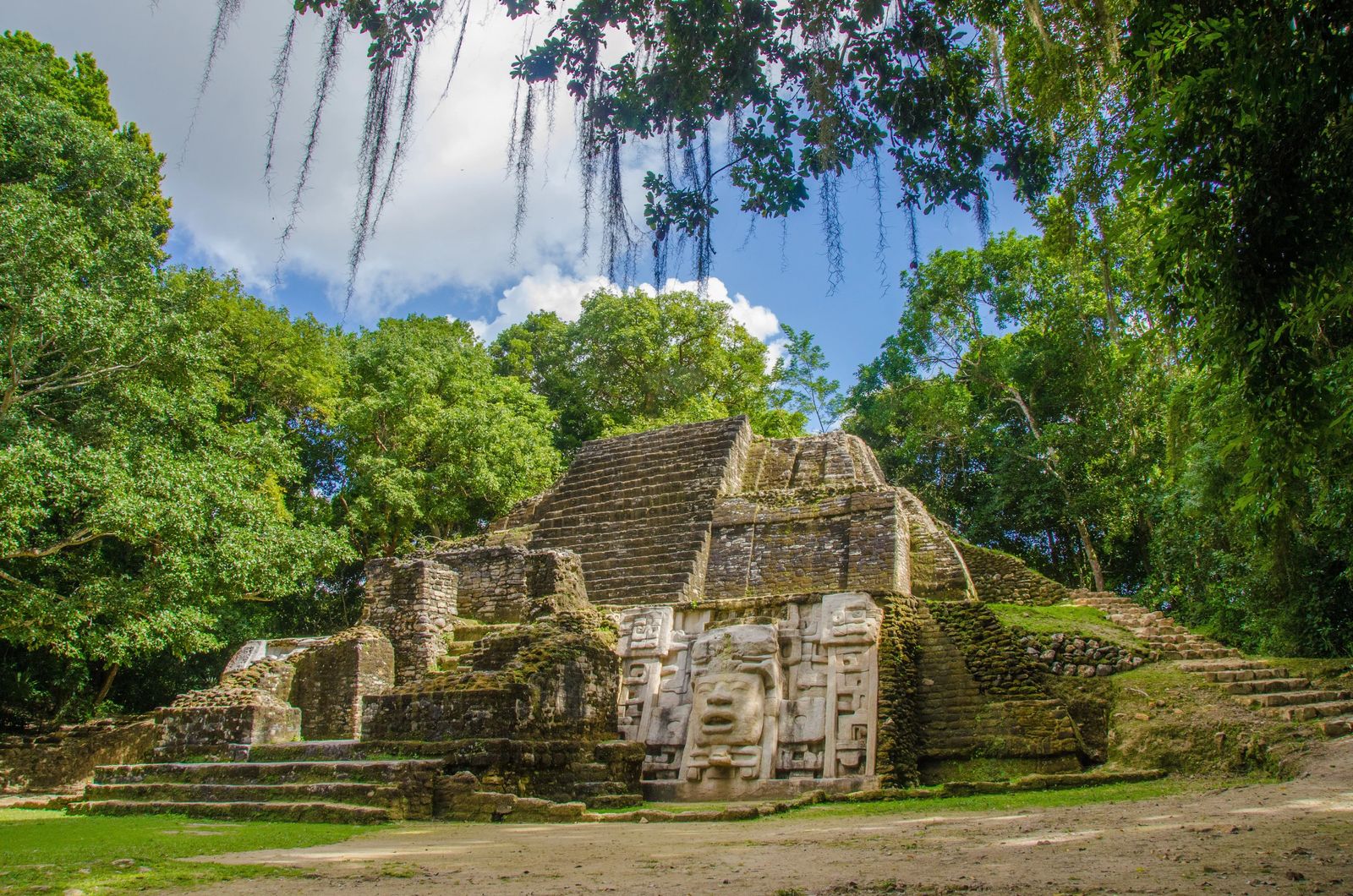
Lamanai Mayan Ruins in Belize: The Perfect Shore Excursion
Belize is a country unlike most in the Caribbean, it is quickly being considered as the next Venice of the South. Luxury hotels, incredible food, and hospitable people make this a truly spectacular place to vacation to. Yet the two things I enjoyed most while visiting Belize were the Lamanai Mayan Ruins and Rio Secreto. I was able to take a cruise to the Western Carribean, and visit this ancient city - learning all about what life was like in ancient Mayan times.
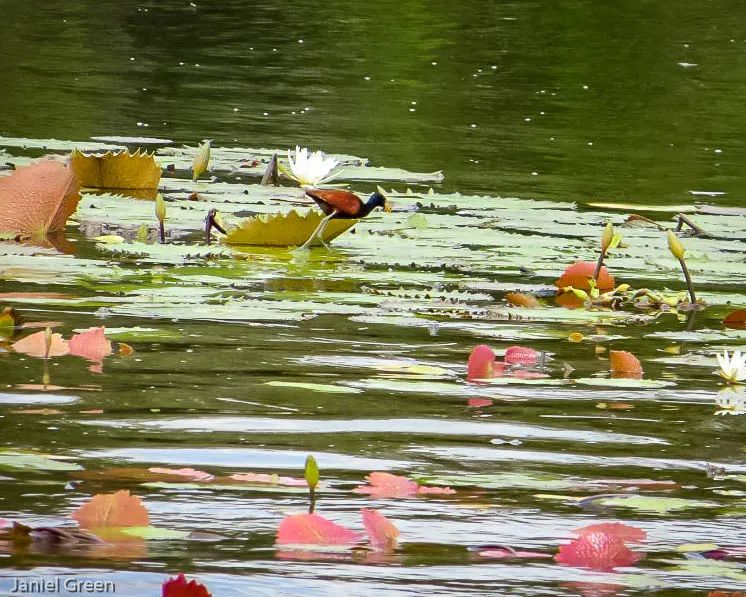
How to Get To Lamanai Ruins
Getting to the Lamanai Ruins is half the adventure! I would suggest picking a tour group as the journey can be quite extensive - but easily done within the time allotted for a shore excursion. The drive from the port to the boat launch is around an hour, from there you take a boat along the New River.
The boat ride is up a very tropical river, albeit hot so be sure to bring an umbrella or a wide-brimmed sun hat. You will likely see Spider monkeys, howler monkeys, a variety of tropical birds, plants, and maybe even a drifting crocodile or two that the guides are great about pointing out to those on the boat.
I would suggest getting a spot on the front to middle of the boat for a nice breeze, excellent view, and a bit of spray from the river as many of the boats do not have shade on them.
You can also drive, but the drive out is long and really bumpy (think four-wheeling in a small van). You can choose either option from the Orange Walk area.
The History of the Lamanai Ruins
Entering the ancient Lamanai city, the guide pointed out mounds of dirt we had to walk over. The two mounds were about 8-9 feet in height, with a trench in between - suggesting that these were strategically dug in order to be used as a defensive protection for the city.
These ruins date back as far as 1500 BC, and have been excavating the ruins here since 1974 so it is still fairly new to the archaeology world. The three temples they have uncovered so far are the Jaguar Temple, The Mask Temple, and the High temple. These are the main highlights in the Lamanai ruins, and unlike Chizen Itza, you are able to climb up the High Temple for a great view over the canopy.
Something I learned about Mayans was that they put their faith in animals, and believe they represent different parts of a person. These animals are called Nuals or spirit animals that help shape our personalities as humans. They are also believed that in worshiping them, it provided a way for the specific power they would hold to enter them.

Temple of the Jaguar
This was my favorite Temple here apart from the high temple because you have to use your imagination to see the Jaguar. It was used up until the 15th century when the Lamanai people were converted to Christianity by the Spanish. The Jaguar is a cleverly structured so that the extensive time to carve the face from stone was avoided. Instead there are slots placed for the eyes, mouth, and nose. The slots placed here were used to leave offerings to the Jaguar God.
The Jaguar was considered the God of the Underworld, but takes the image of the nighttime sun God. He is often connected to fire rituals, which are very sacred to the Mayan Shamans. He is also considered to bring trade, riches, and is connected to the powers of sorcery.
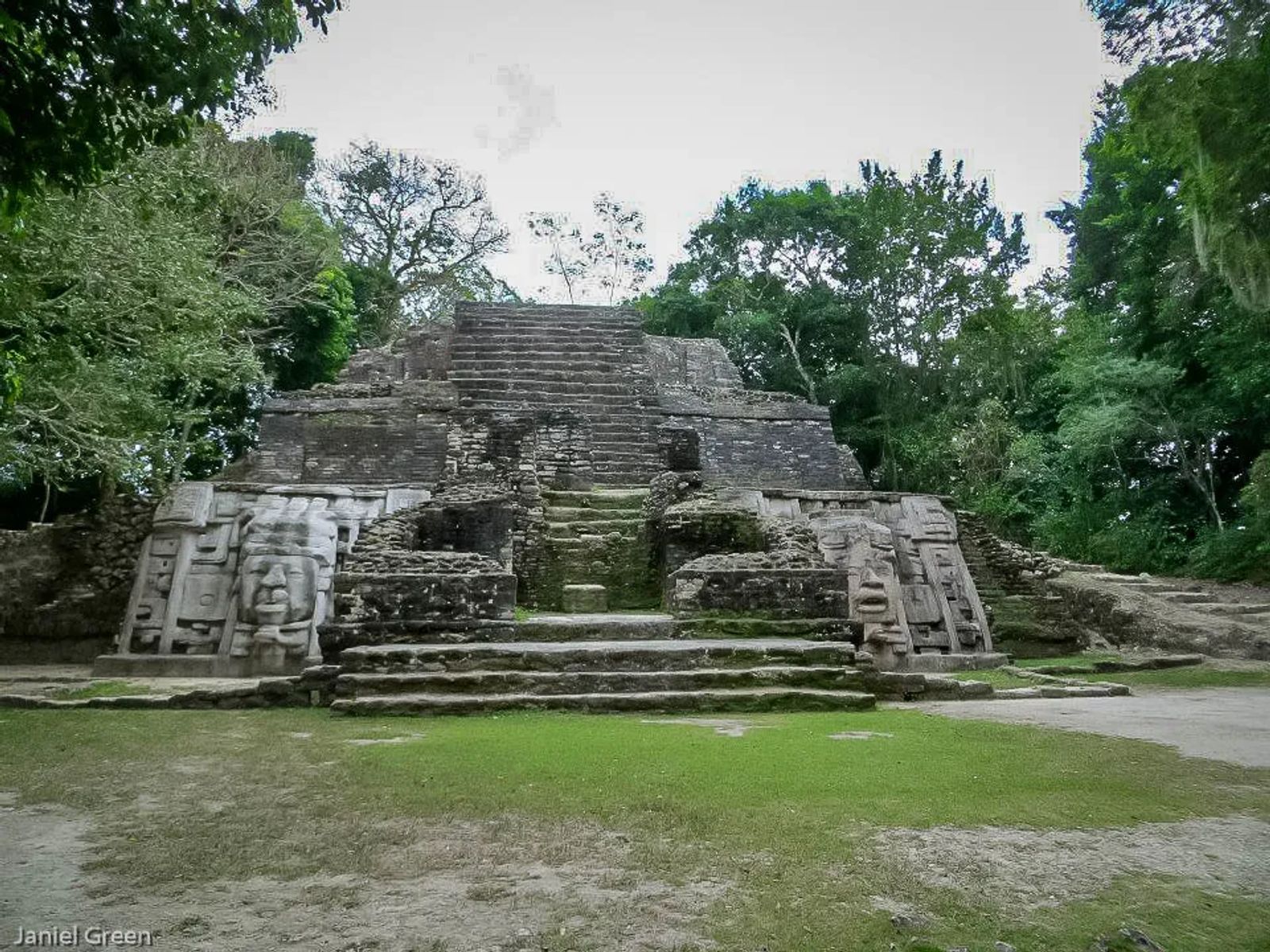
The Mask Temple
This temple was built during 200 BC, and has two massive limestone heads carved carved into either side of the temple. Many historians believe this face represents one of the early leaders of the Mayans.
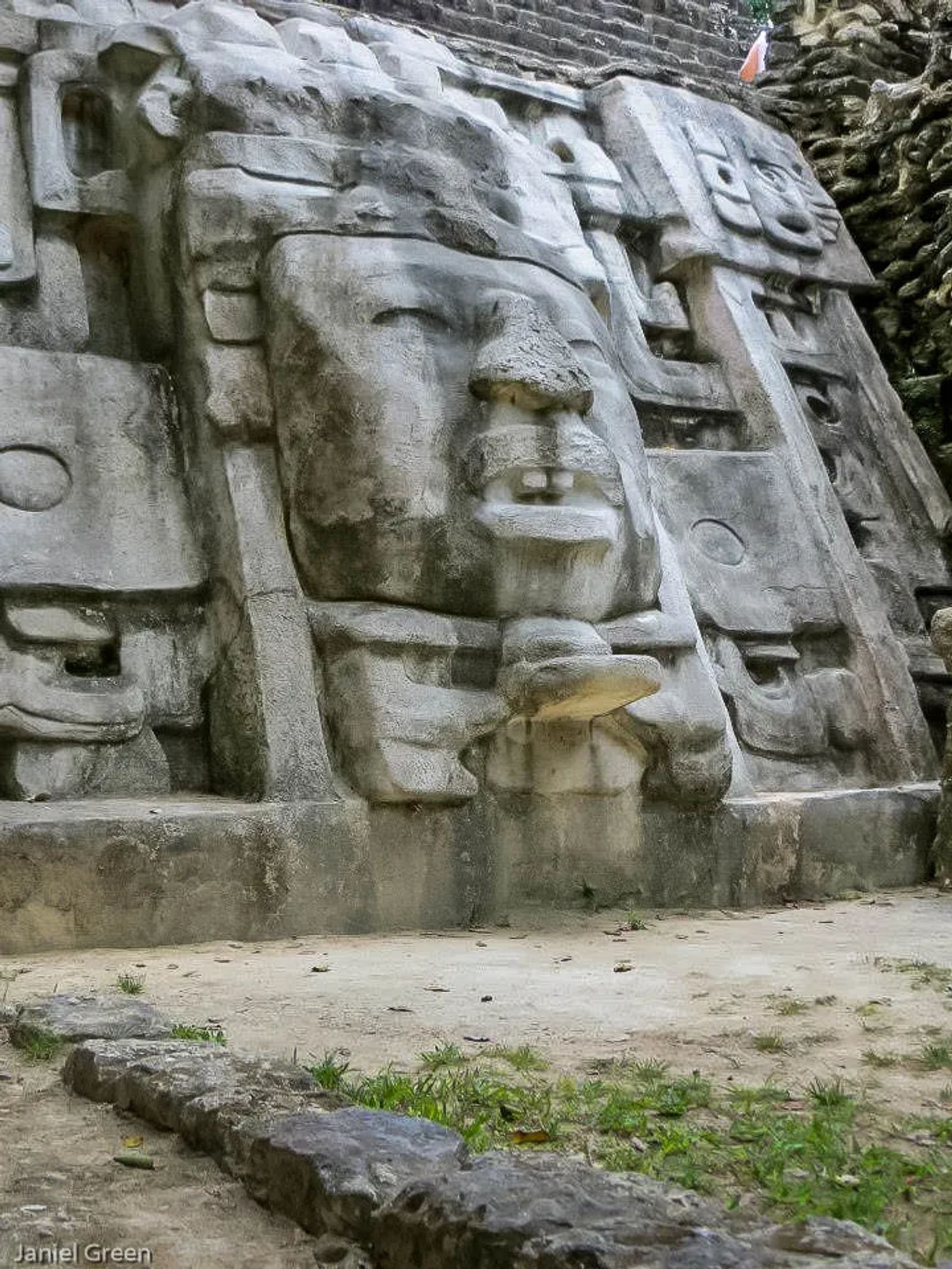
Beneath the temple, archeologists found a burial chamber with a male and a female buried here with several jade statues. These can be representative of a possible trade route between Copan or Quirigua and the Jade mines of a Guatemala.
The High Temple
The Lamanai Mayan Ruins in Belize are unique in that it has the tallest Mayan Temple, the High Temple. Rising 108 feet (33m) into the sky, this temple provides an incredible view of the canopy surrounding the area. This would have been the tallest building in Mesoamerica and was a bit of a billboard for those on the new river.
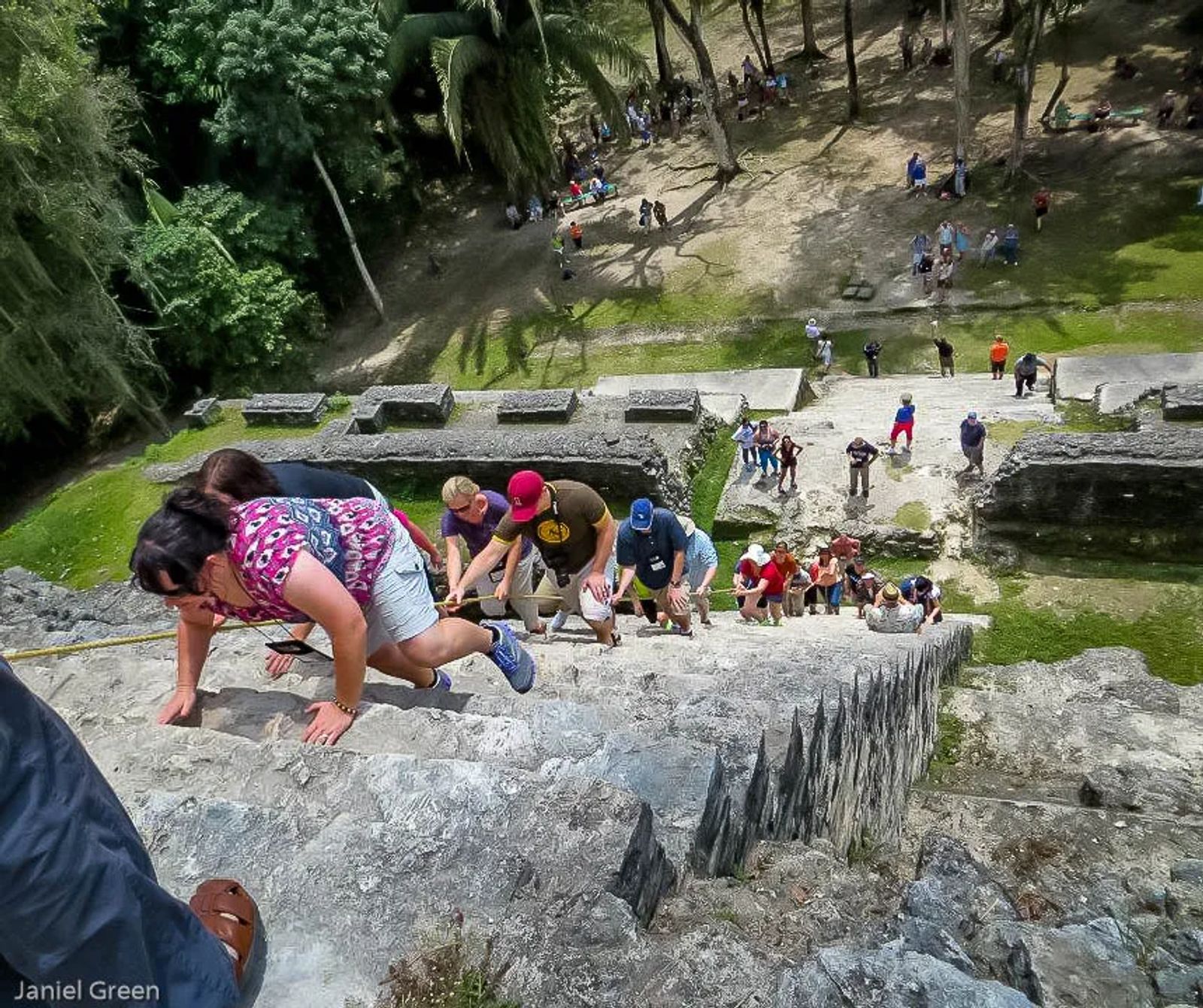
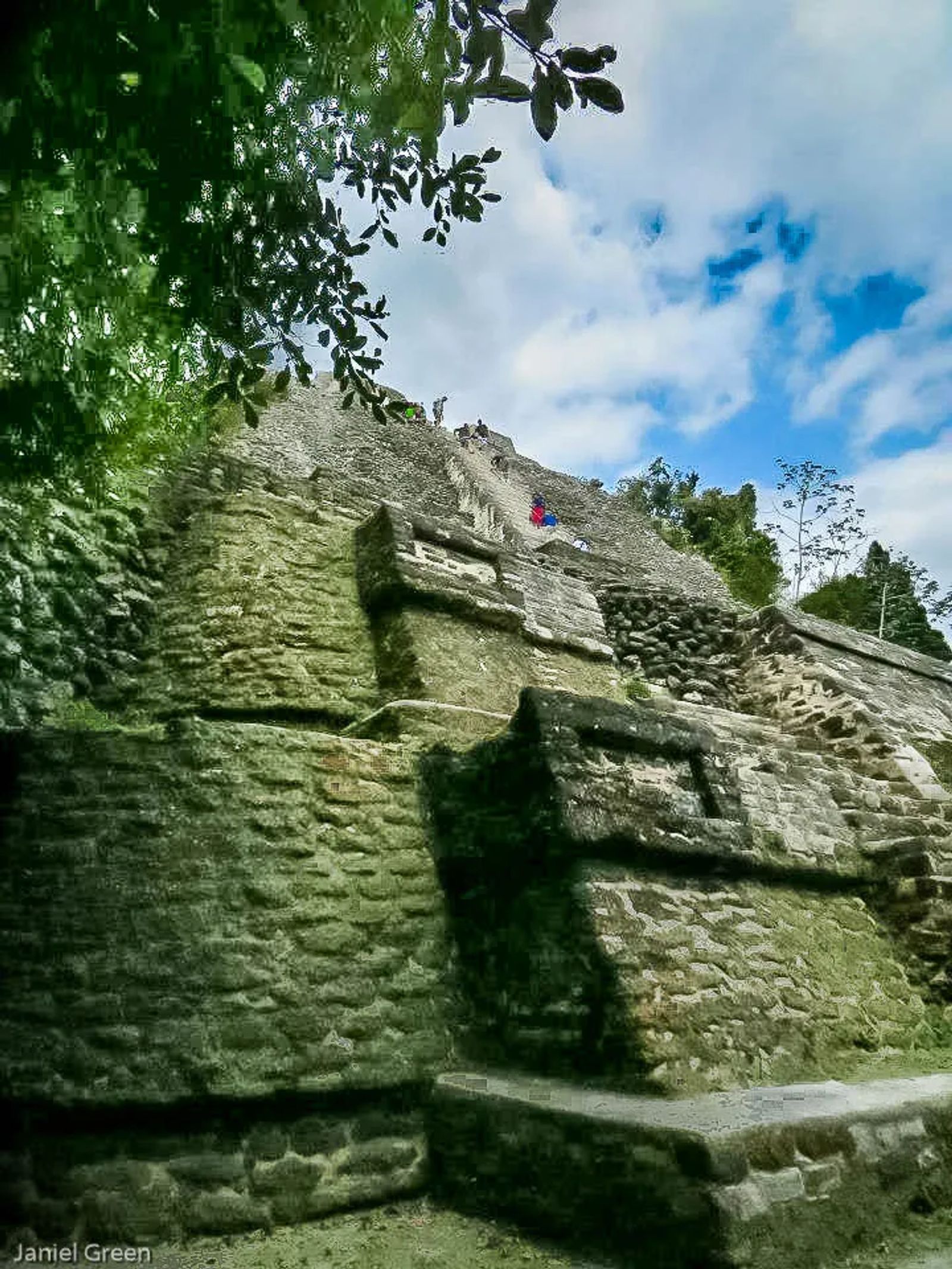
The long part of the temple (now deteriorated) once extended the entire length of the open area in front of the temple. This former part of the temple was used for sacrifices, and other offerings to the Gods. The guide told us when they were excavating they found parts of animal bones, and human bones.
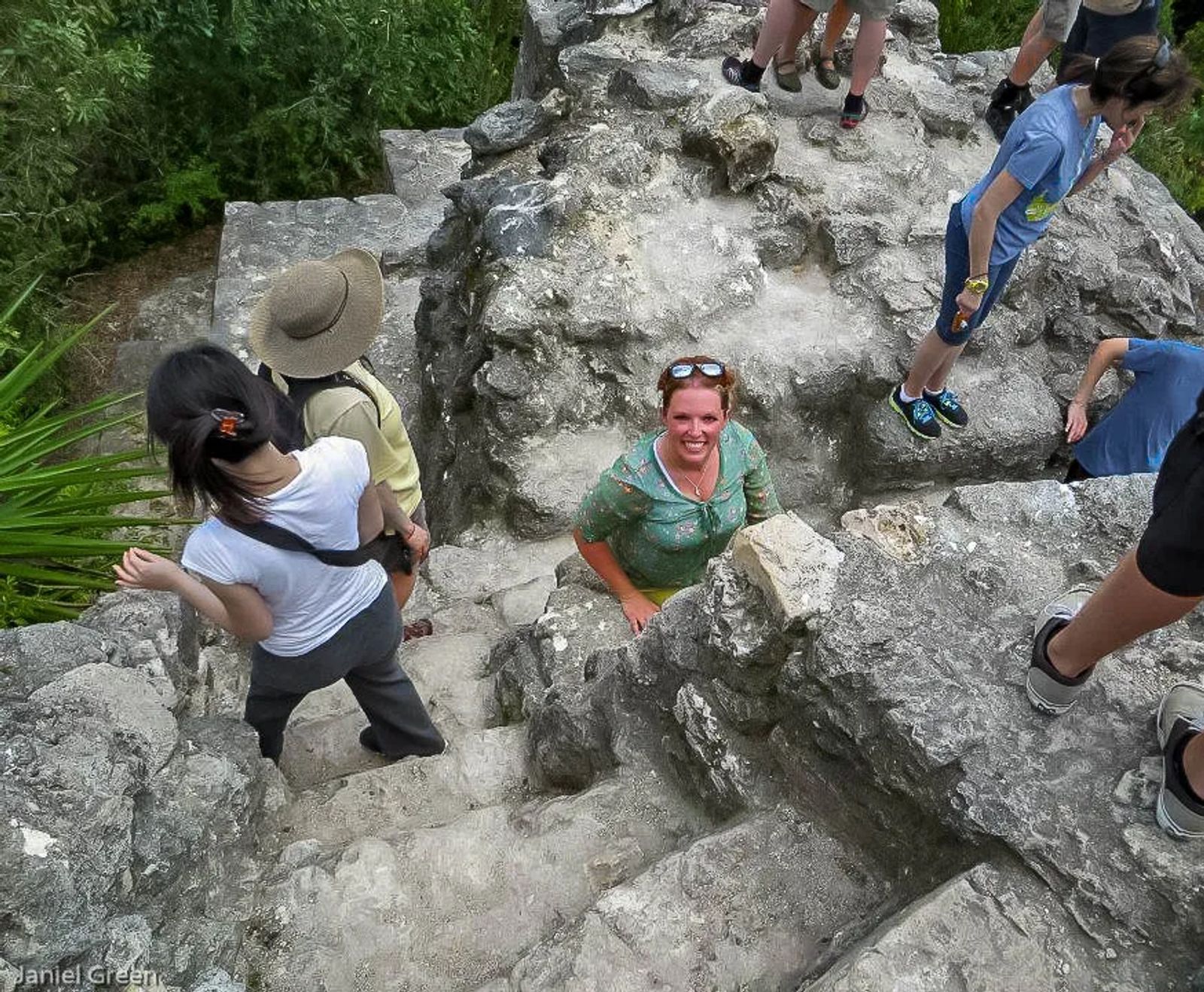

The High Temple would have brought them closer to heaven, and allowed them to plot the stars and check the position of the sun. You can still climb to the summit today, but it is quite steep and so make sure you have good knees and are not afraid of heights. Take is slow and steady and you will be awarded with an amazing view.
It is interesting to think about how much science has taught us vs what ancient civilizations would craft in their minds to explain simple processes. It makes me grateful to live in a time and age, where I'm able to know the 'why' for most things. Why the stars rotate, how animals function, how to heal the human body - and especially like that human sacrifices for the purpose of religion has become a thing of the past.
The Sunken Crocodile
Lamanai is the Mayan word for Sunken Crocodile, first recorded by Franciscan Monasteries visiting the area in the 15th century. My inquring mind wondered, 'Why would you name a city after such an ugly creature?'. Crocodiles, in Mayan theology were typically associated with fertility. Crocodiles were associated with the fertility of the soil, and the timeliness of the rains. Later on, the crocodiles were associated with the nobility. The God Itzam Na was commonly associated with the God of nobility.
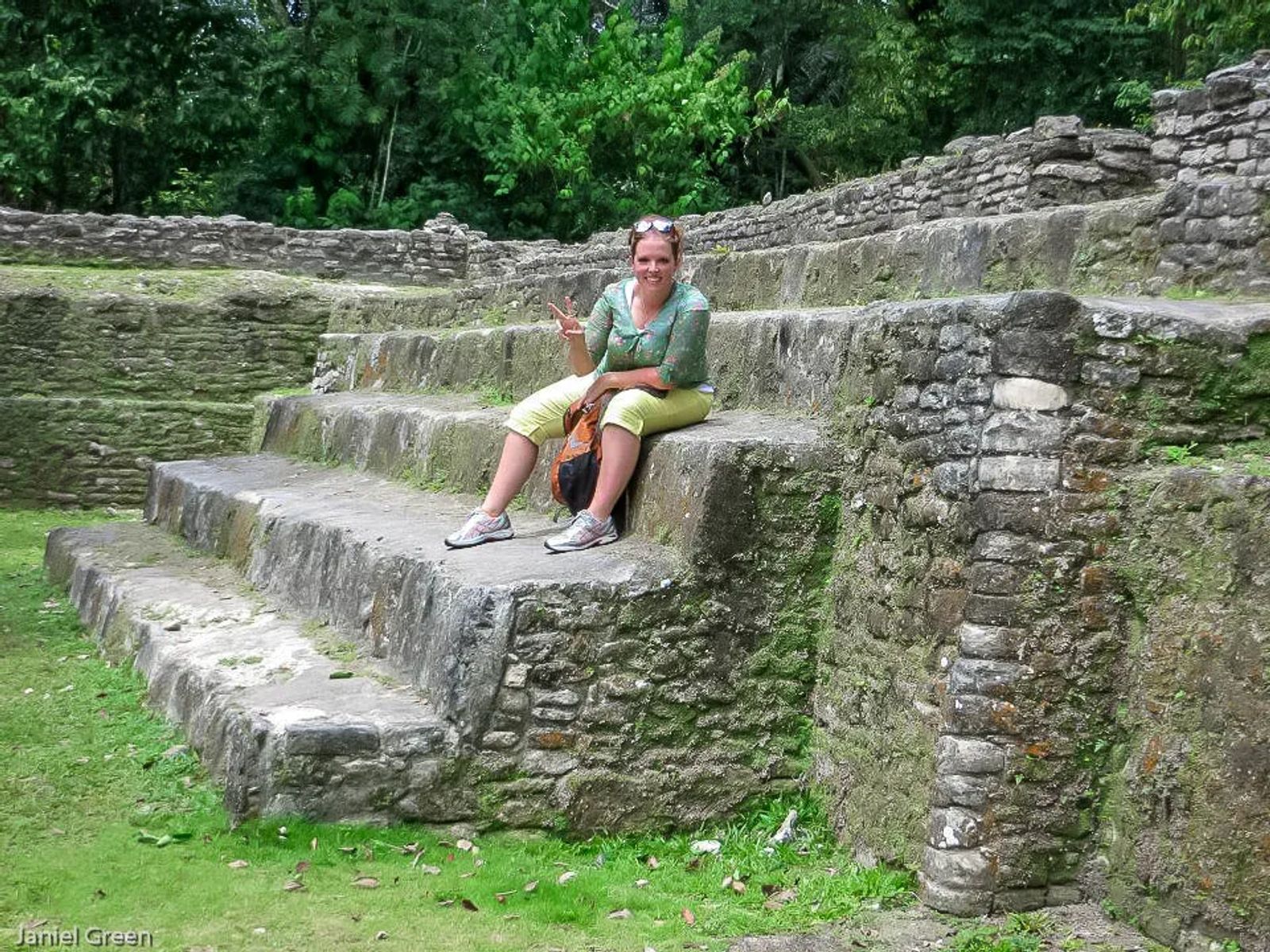
There are a few things that crocodiles do well, and that is search for life, search for water both which are crucial elements of the earth. The Mayan's believed that like a terrestrial being they can find water and absorb the energy from it. They also obtain it through a Celestial element by commanding the rainfall. So they believed that the crocodile is both terrestrial, celestial and from the underworld as well - rising from the depths to contact humans and give inspiration.
Water is, and was revered as a sacred element of life - despite all the rain, jungle and resources - the people in Belize have often known drought as much of the surrounding water is undrinkable. So to have animals like Crocodiles search out water sources, I could definitely see the connection of importance to the Mayans and these ferocious creatures.
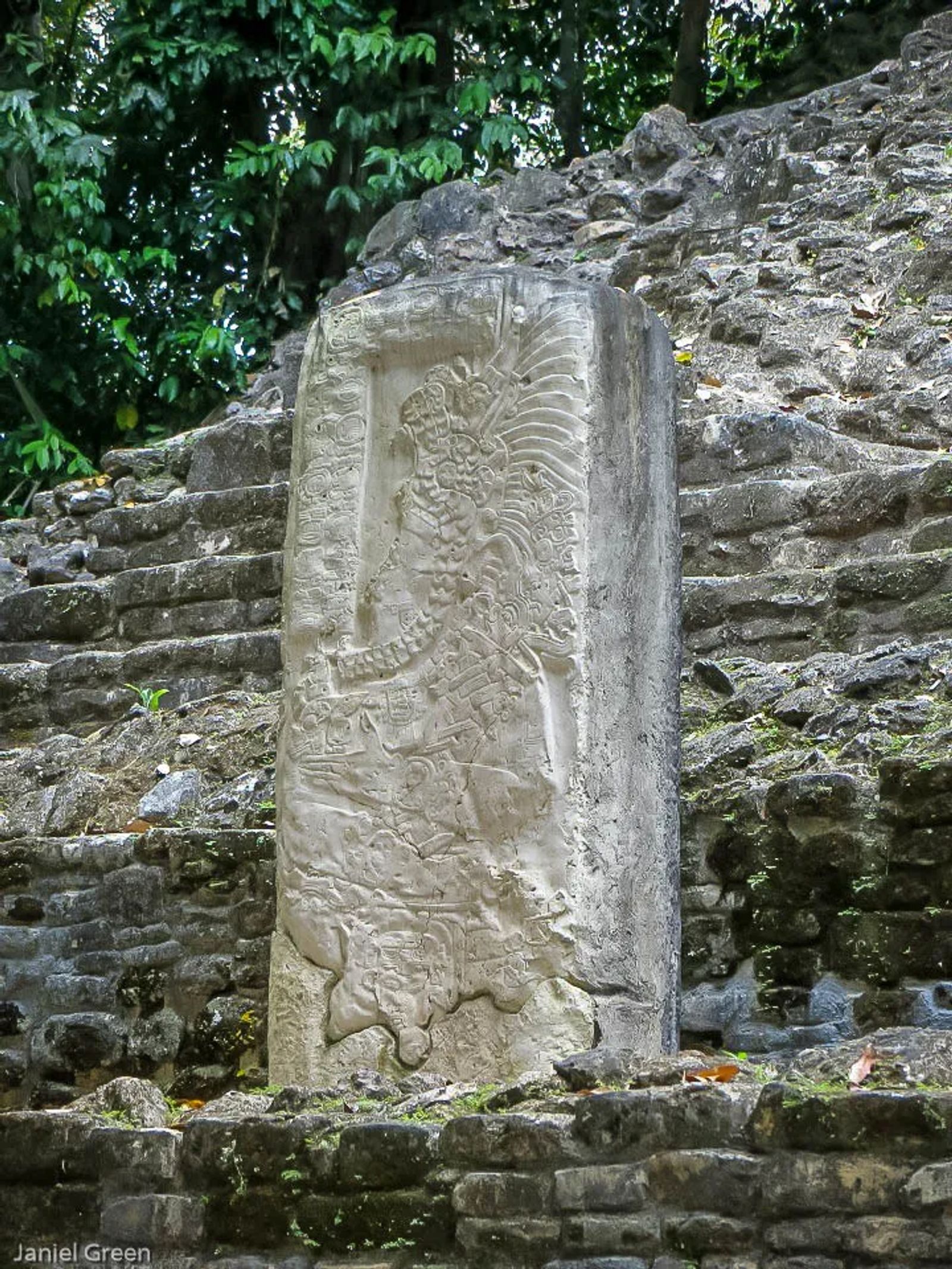
Stela 9
This Stele was one of the first items found when uncovering this building. I didn't understand the meaning of this Stela until after I came home and was researching it.
It has a long Heiroglyphic text on it that provided quite a bit of insight into the Mayan culture and religion. Many 'writings' with the Mayan Culture were done in images, that were then interpreted.
Stela 9 shows a image of a king dressed in symbolic attire. The symbolism of the attire reflects that of cosmic events (interpreted as acts by the Mayan Gods) that would happen in this area.
This King is wearing a serpent-monster headdress (likely a crocodile) symbolizing his celestial/divine birth/descent to being King of this region of the land. There is a dragon-like serpent head that protrudes from the top of the sceptre he is holding, and has a god appearing from its mouth, which is said to be the patron deity of Lamanai. The God from the sceptre wears goggles and has a curling serpent seeping from the corner of its mouth, both of these images are often associated with the rain-gods, such as Cicoyo/Chac/Cauac/Tlaloc.
While it is hard to see this in the photo, this is an important piece in the Lamanai Mayan Ruins in Belize as it provides further evidence of Mayan culture, their beliefs and images associated with certain Gods they worshiped in this region.
Entertainment without TV in Lamanai Mayan Ruins in Belize
It might be wrong to call it entertainment, the Mayans used it as a way to hold rituals and even ritualistic sacrifices. There are several basketball courts in Lamanai, shaped in an I shape with two slopes on either side. There was a long narrow playing field and two end zones. There was a 20 foot (6m) ring which competing teams would try to score through.
These rings are twice the height of a NBA net. The rules are not well understood as they weren't documented well. There were, however, end results for the winners....some being not so enticing.
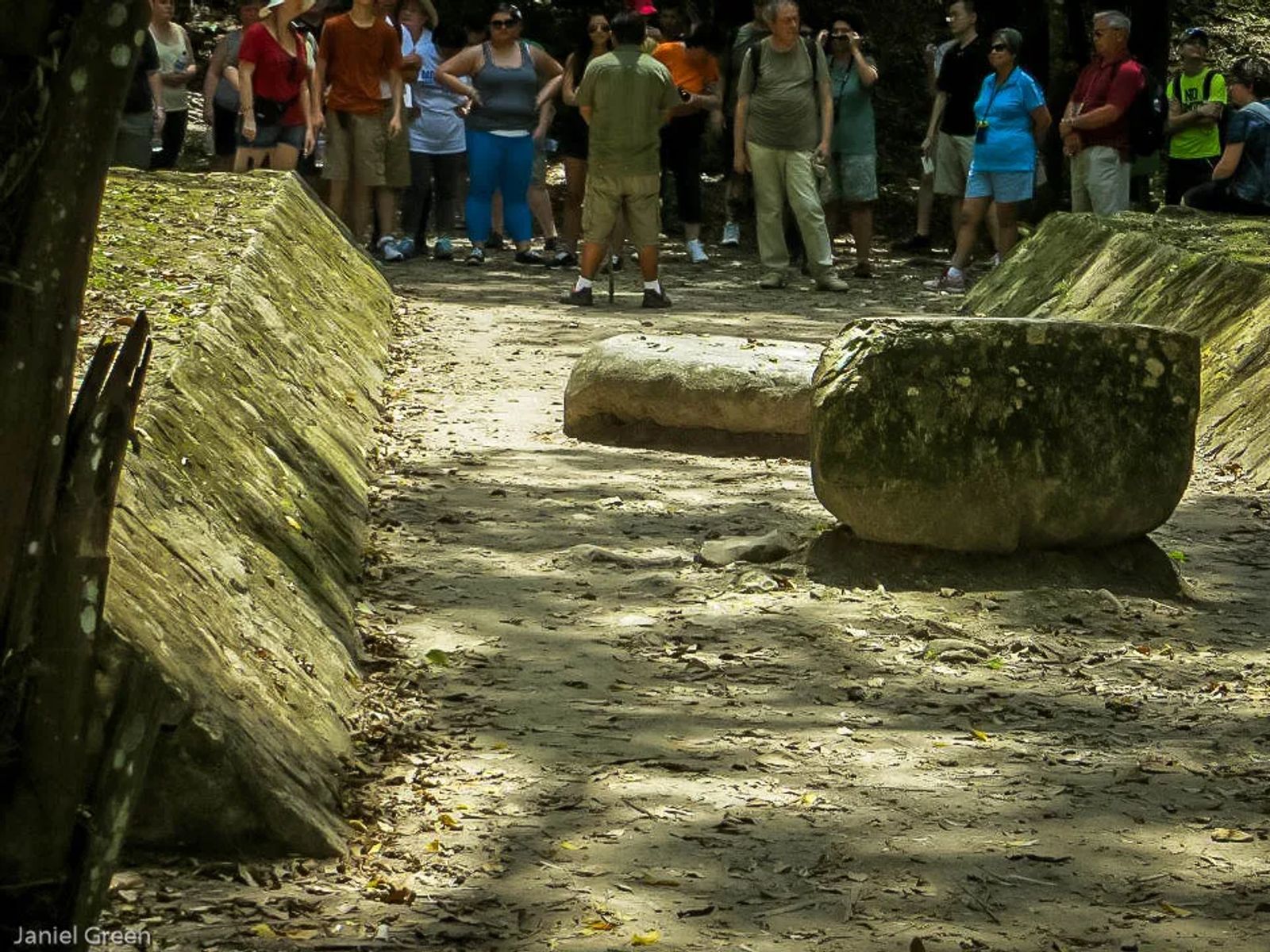
Many Mayans played this game, and often were mere betting on the teams that would happen. Other times it was done as a significant spiritual and ritualistic meaning. The significantly ritualistic events turned spectacle in rigged games where prisoners of war played and were sacrificed in the end.
Mayans believed that the Gods needed needed human blood to keep the sun and moon orbiting for their harvests. Thus it was also seen as a game between life and death, good and evil, with the possibility of the winners becoming demi-gods themselves.
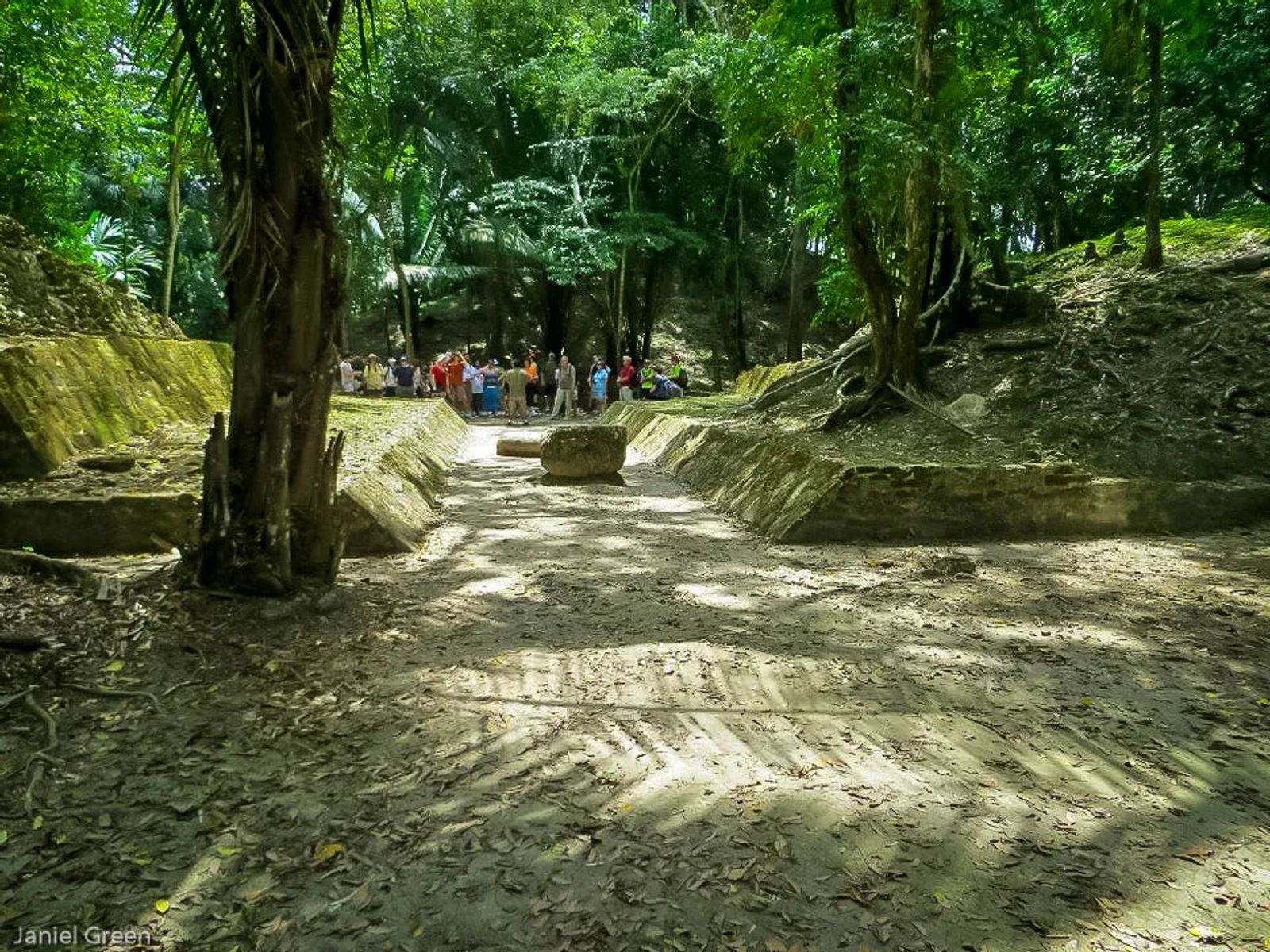
There are over 1300 of these basketball courts throughout mesoamerica. There are over 500 of them in Guatemala alone, where they believe this game started.
While no one knows the exact rules of the ball game, Spaniards who saw the Aztec games in the 1500s reported that two teams of two to five players had to keep the ball in the air without using their hands or feet. They hit the ball with their upper arms, thighs or hips.
The rubber balls they used were of varying weight and size, from the size of a softball to a soccer ball. Solid rubber balls were heavy—up to eight or nine pounds—and could cause serious injury or even death. Games were won mostly by points. Around A.D. 1200, stone circles with a hole in the middle were attached high up on the walls of the ball court, up to six meters high. While getting a ball through the hole was rare, if a player got the ball through the hole, it was an instant win.
I knew there was a reason I have never been a big basketball fan. Now every time you watch a game, think about the opposing team being sacrificed in a blood ritual, lol.
Trade in Lamanai
Lamanai was a great trade route, being so close to the river. There have been remnants of trade materials within Lamanai, namely trade metals like copper dating back to 1150 AD. There was also Jade, bells, clothing ornaments, pins, chisels, axes, needles and fish hooks found.
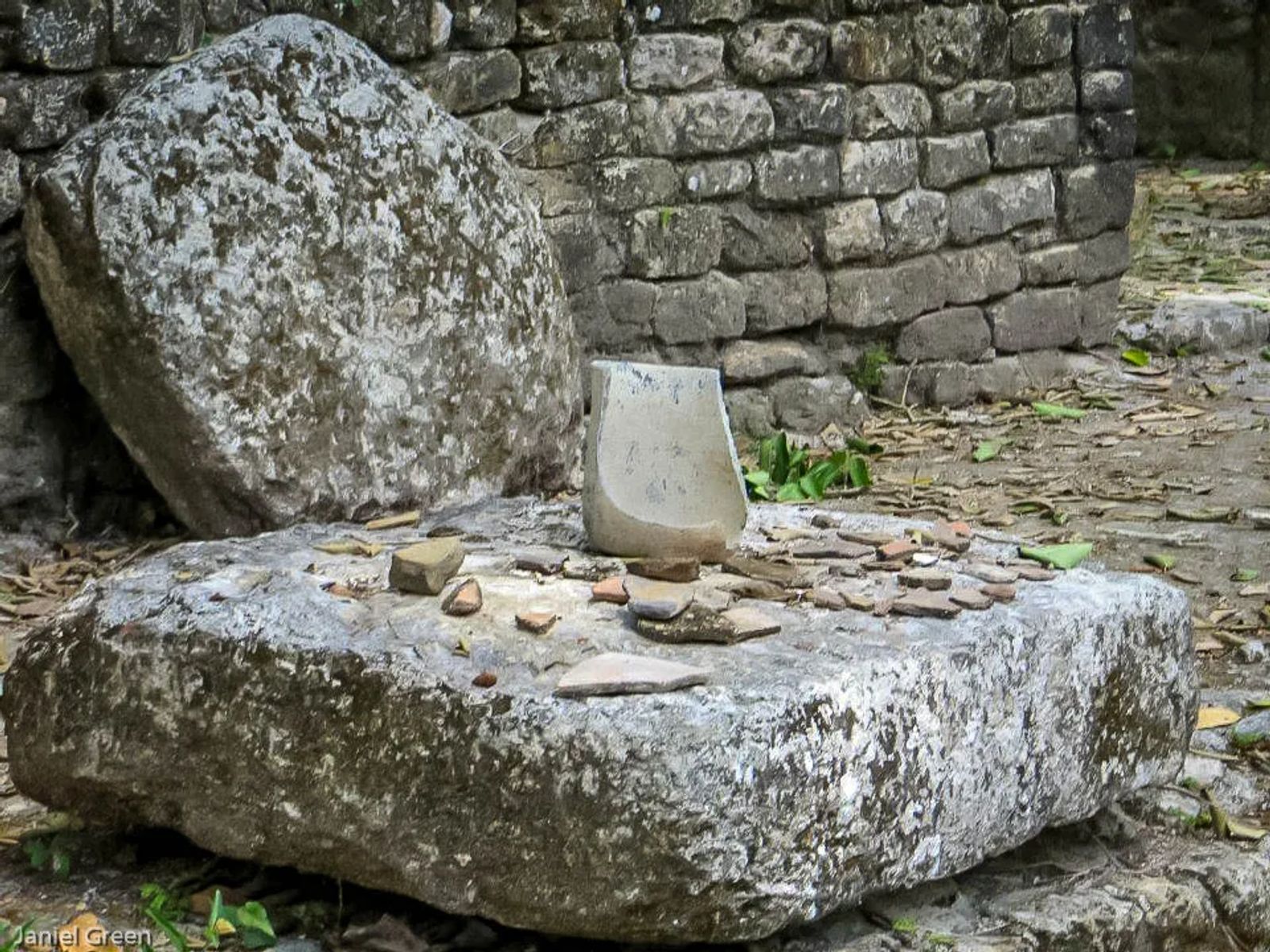
Learning Mayan Culture
The Lamanai Mayan Ruins in Belize have yet to all be unearthed as funding for it is quite scant, yet I highly encourage a visit to see this ancient city. The Mayan culture was a unique and highly developed civilization for that time period.
It is always fascinating to learn about these ancient cultures, how they made sense of their daily lives, deities they worshiped and how they handled territorial disputes in the Jungle.
A visit to this Mayan city is highly encouraged for all those who have a sense of adventure, and want to learn how these people lived, worshiped, and died.
Like it? Pin it! Sharing it Caring ;)

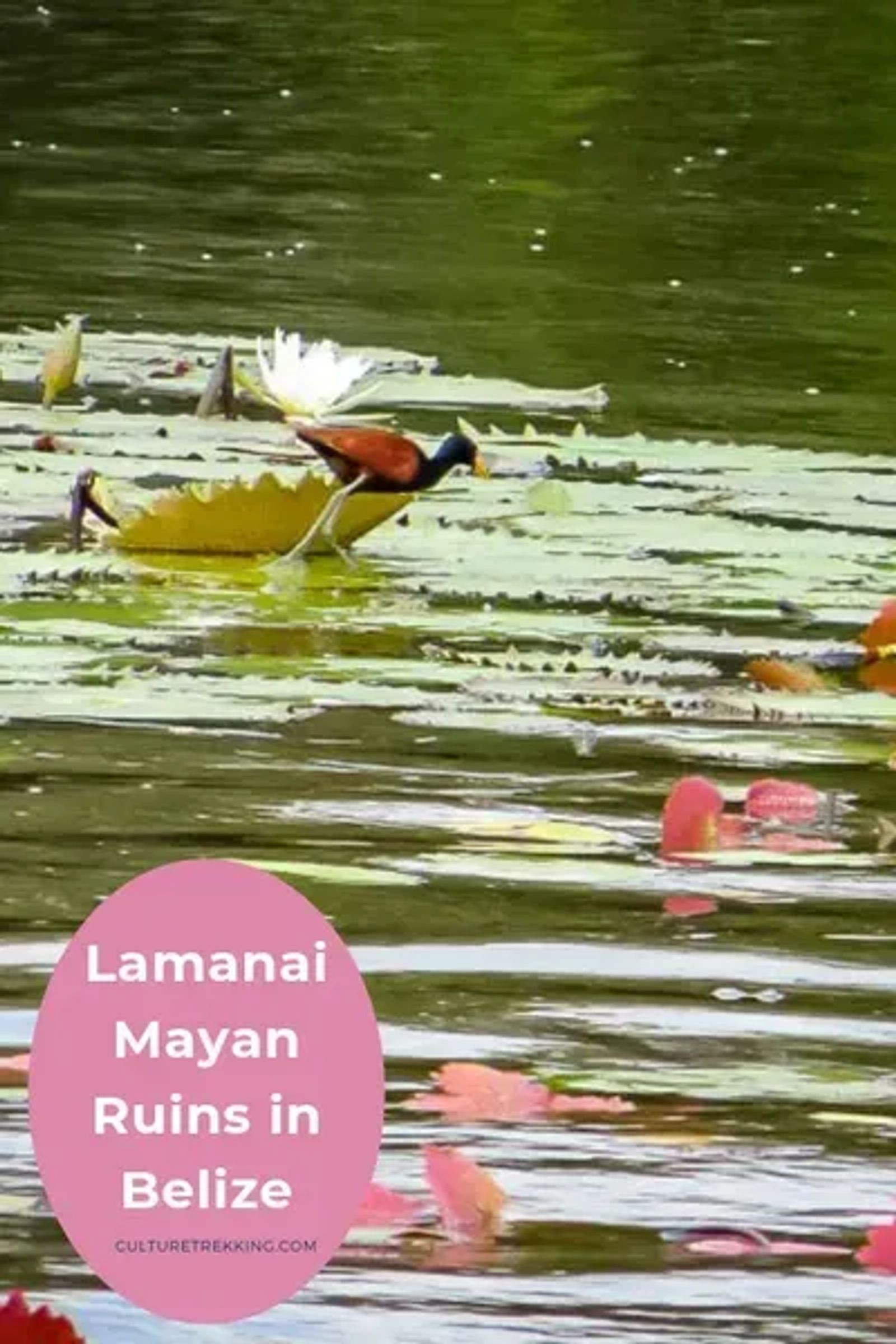
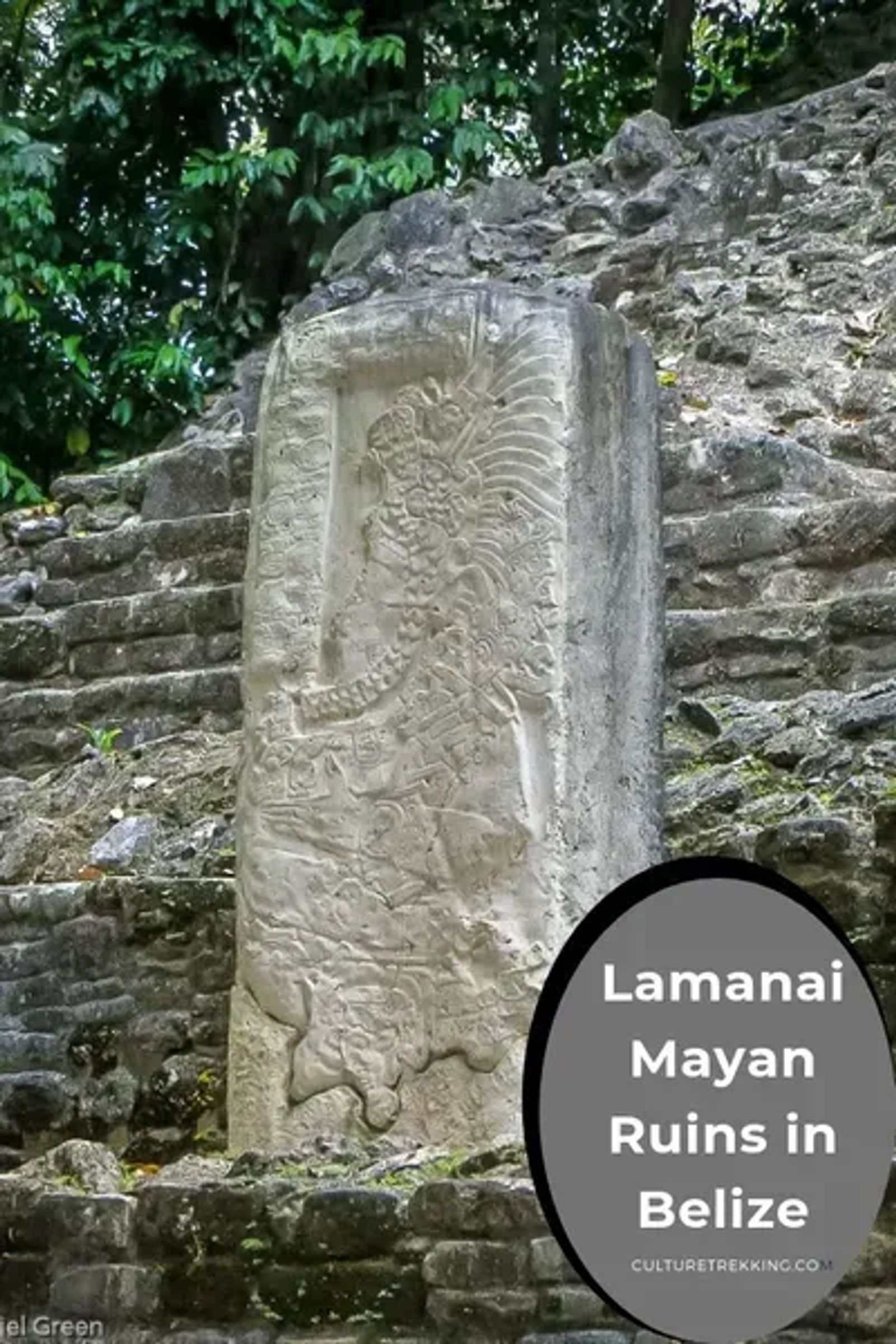


Where to Stay in Belize
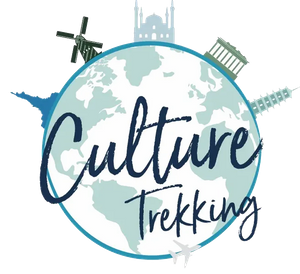

Welcome to Culture Trekking!
My name is Janiel, I specialize in solo female travel, cultural connections, sustainable adventures, food and history to help make your travel experiences fun, meaningful, and delicious. My experience in travel, and my personal story have allowed me to get published in Fodor's Travel, Atlas Obscura, Metro.co.uk, Trip Advisor, and multiple Podcast interviews. You can find me on pretty much every social media channel YouTube, Instagram, Twitter, Facebook, Pinterest, TikTok. To read more about me and my story click here. If you are a brand and would like to work with me, click here.


